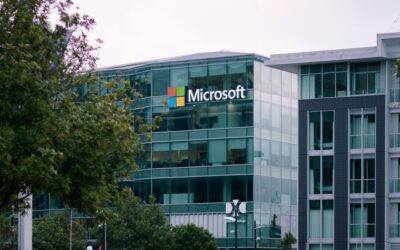By Paul Marriage, co-founder of Tellworth Investments
It seems investors are talking about the 1970s a lot more of late, as perhaps there are some parallels today – maybe more so at one year into the 2020s than we had hoped for. The 70s started with a lot of excitement about a repeat of the Roaring Twenties with all the messy economic and political stuff that followed still 10 years away.
The year 1971 displayed portents of some of the bigger challenges ahead. Inflation was picking up, but energy prices had not yet started to soar. UK companies were investing in research and development but were lagging in their investment in production efficiency. Intel launched its first microprocessor in November 1971 – a small start to something that would make an enormous impact to global economies in the next 50 years.
The plethora of 2021 scaremongers often refer to the winter of discontent repeating, but that occurred a whole seven years later in 1978 when a Labour government fell out with the unions and ultimately the decline in heavy industrials in the UK was accelerated as Margaret Thatcher came to power.
The economy and its representation on the stock market has a very different structure today. Renold – with £75m market cap and +163% YTD return – is one of the few remaining traditional industrials from that era still listed, and Intel – with $205bn market cap and +1% YTD return – is ubiquitous inside and out. The so-called ‘robber barons’ of the internet that Intel enabled are 10x bigger today. Which products launched in November 2021 will have the same impact? Perhaps the internet of things, big data and 3D printing, but probably not the Mark V Range Rover.
Spotting the difference
What did UK plcs face in 1971 that influenced share price performance most? Interest rates in the UK actually fell from 7% to 5% in 1971. They started to move in 1972 to peak 14.25% in 1976, briefly dipping before rising again to close off the decade at 17.25%.
GDP actually grew by 3.5% in 1971, while the unemployment rate in 1971 started at 3.8% and ended at 4.4% —
a tad lower than is recorded today based on the Office for National Statistics (ONS). Unemployment dropped sharply in 1972 and 1973 before it started its rip up to 10% a decade later. So 1971 was actually a relatively benign environment with only modest clear signs of trouble to come, the standout being inflation – CPI surged from 5.5% to 9.5% in the year. Today, we have rising inflation and interest rates from a very low base and falling unemployment from the 2020 spike.
In stock market terms, 1971 was a stellar year. The FTSE Actuaries index, which ultimately became the FTSE All-Share, celebrated its 10th year with a 41% return. It was also the year the Nasdaq launched at 100, a mere 15,760 points ago as I write. Something rather special will have to happen in the last few weeks of the year for even the mighty small-cap market to beat that this time around. A repeat of the last few weeks of 2020 would do the trick.
It was interesting to see how muted the market’s reaction was to Pfizer data on its Covid drug this month, compared to the ecstatic and prolonged rally the same firm’s vaccine efficacy delivered last year. It was 1973 before global equity markets got spooked by the Bretton Woods Conference and the oil crisis, and even then, the correlation between UK and US markets was less marked.





